You have a weekend getaway coming up and you know you’re headed to Belgium, but you can’t decide which iconic city to choose from: Brussels or Bruges? I hear you. Both cities are worth a visit for their distinctly different charms, but for those short on time, this guide is here to help you decide.
You’ll find that the majority of visitors to Belgium are headed one of two ways: Bruges, or Brussels. While not exactly far from one another, those on tight schedules will often only find time for one of these two fabulous cities. The good news is that both Brussels and Bruges are perfect for a 2 or 3-day break. But which city is the better choice for you?
Brussels is a large cosmopolitan capital city with over a million residents, whereas Bruges is a more intimate, medieval, fairytale-like town.
Disclaimer: Hi! this post may contain affiliate links which will take you to online retailers that sell products and services. If you click on one and buy something, I may earn a commission, see my Affiliate Disclosure for more details.
Brussels has a mix of cultures, diverse architecture, and many food and nightlife options. Bruges has a more relaxing atmosphere, where you can casually stroll along the picturesque canals and cobblestoned streets.
But there’s a lot more to think about and learn about these two Belgium cities before making your decision. Here are highlights of both Brussels and Bruges to help you decide!
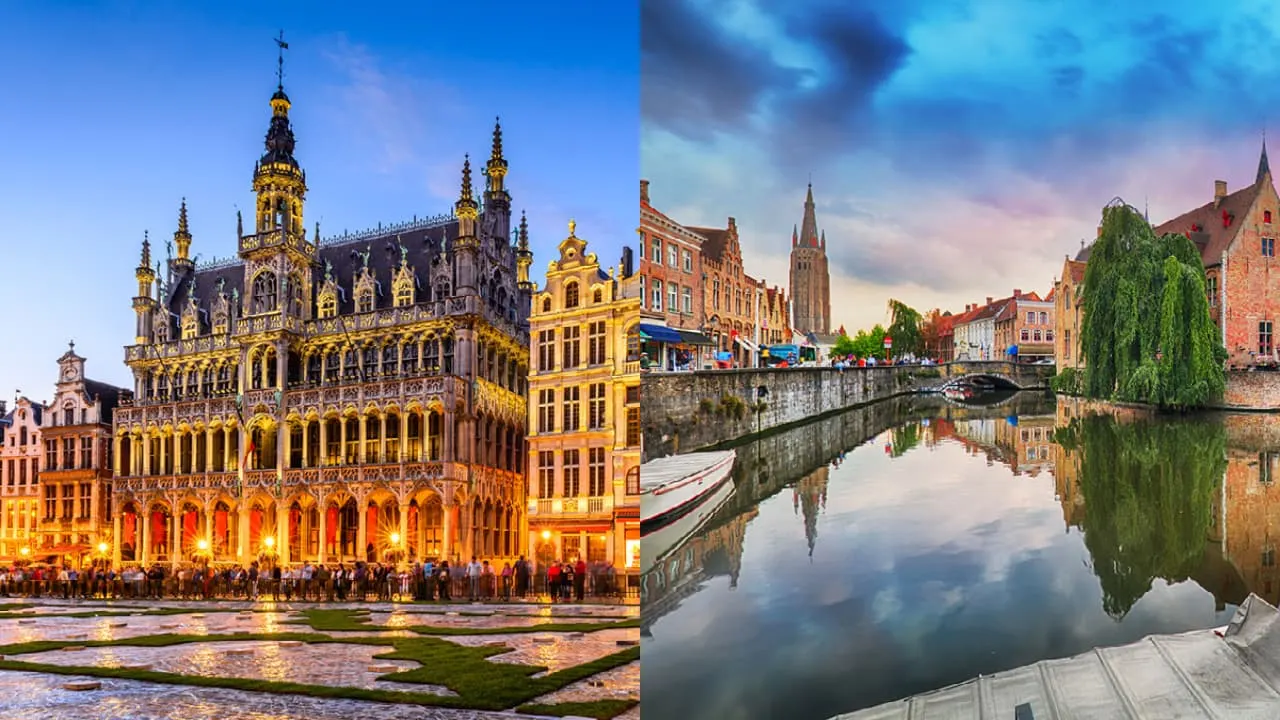
Brussels and Bruges: History and Overview
I’ll be honest, most travellers end up choosing Bruges over Brussels because its small, dreamlike, historic charm just seems to lure them in. Literally known as the jewel of Belgian tourism, it is hard to resist. However, Bruges can, somewhat like the canals of Venice to which it is so often compared, get awfully busy, so keep that in mind if you’re travelling in peak season.
While Bruges is a quaint medieval town that seems almost frozen in time, with Brussels, you get what you’d expect; a vibrant, bustling city with a range of cultural activities to keep your senses engaged. Like any big city, you should keep on your toes – though any unsavoury areas are well out of typical touristic zones – but with its interesting mix of French and Flemish cultures, Brussels has its own charm.
Both cities are very walkable and can be visited on foot in a full day or two. Even though Brussels is a large city, its centre is compact and easily explored. Bruges is unique in that travellers can take in the sights through canal boat rides, bicycles, or even horse-drawn carriage rides.
Brussels has a large community of expat workers, including white collars from the Belgian government, European Union, and NATO, giving the city a special international vibe. But it does lack the antique charm of Bruges.
Brussels
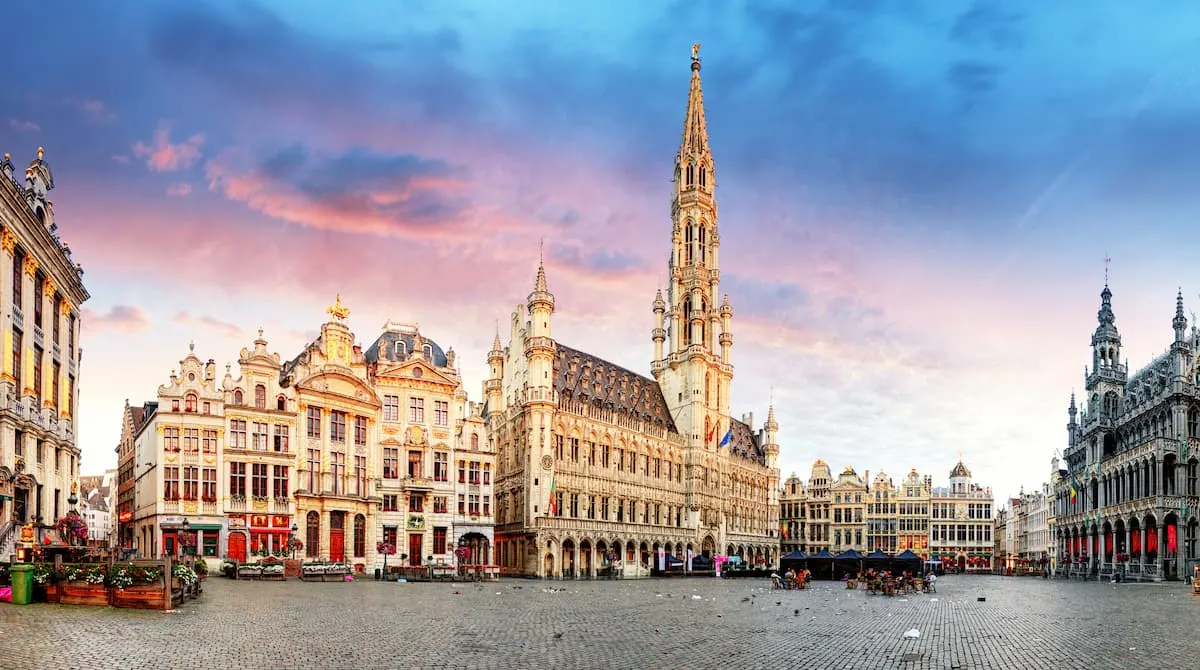
Brussels was founded in 979 AD and is the capital city of Belgium, with the largest metropolitan area in the country. The 1400-1600s brought great wealth to the city and is visible in the beautiful, diverse architecture spread throughout.
The city’s main square, called the Grand Place, is said to be one of the most beautiful squares in all of Europe.
Brussels is also the headquarters to the European Union. 70% of the population are from other countries, making for a large immigrant population. Though Belgium is largely home to a mixture of French and Flemish (Dutch) speakers, the majority of residents in Brussels speak French.
Bruges
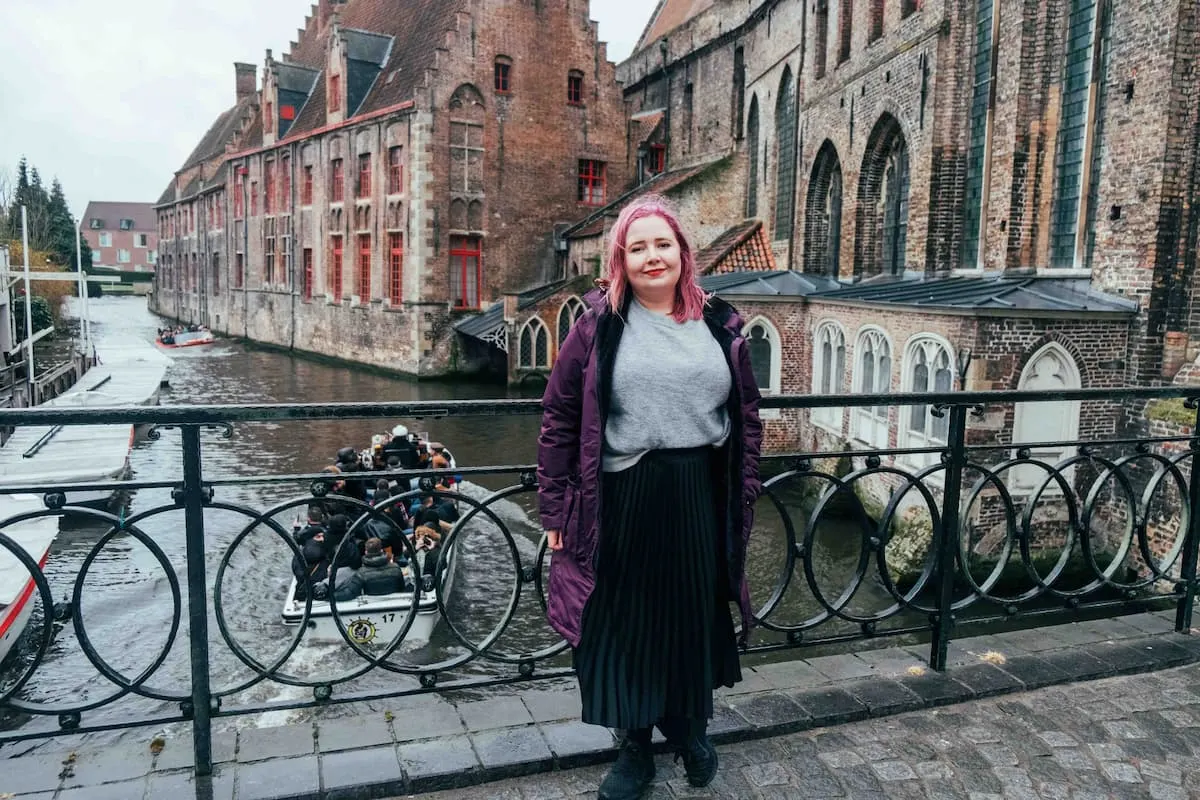
At the time of writing, Bruges has close to 120,000 residents, making it the 6th largest city in Belgium. With many canals and over 80 bridges, Bruges is often referred to as the “Venice of the North,” similar to Amsterdam.
Thankfully, the city suffered very little damage from either world war, and its waterways helped Bruges gain wealth throughout the centuries. Unlike Brussels, Bruges didn’t have to contend with a French army burning down the city in the 17th century! It’s declining importance after the 16th century helped ensure it became one of the best-preserved medieval towns in Europe.
A wonderfully romantic city, made for boat rides and low-lit evening wanders. Bruges’ beautiful web of streets is unlike any place in the world, and while it may not be a match for someone looking for excitement, it’s a city sure to take your breath away.
Bruges is known for its lace, chocolate shops, and Belgian beers, even boasting an underground beer pipeline!
Sightseeing and Culture
Brussels
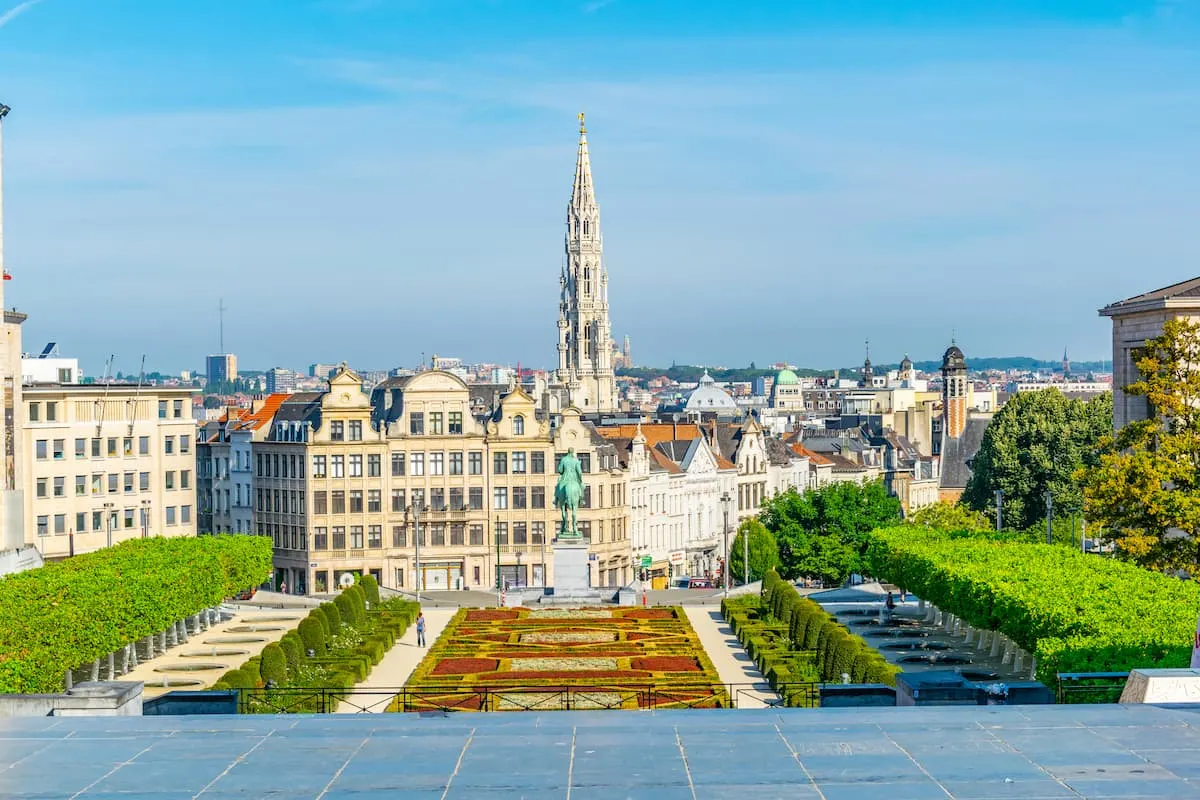
- The Grand Place in Brussels is the city’s main square and without a doubt the first attraction you’ll want to see.
- Brussels City Hall is the oldest building in Grand Place, completed in 1420, is a known masterpiece of Gothic architecture.
- A walk down Koningsstraat to see the Royal Palace and Park is also worth doing.
- The Royal Saint-Hubert Galleries are a trio of gorgeous glass-covered shopping arcades filled with up-market boutiques and elegant coffee shops.
- Look around the Palace of Justice and then just outside, take a glass elevator to the Marolles district, where you find a unique atmosphere with small stores and a nice little Sunday market.
- You’ll recognize the Manneken Pis, a famous fountain sculpture designed in 1388. It’s one of the most beloved symbols of Brussels, and originally served as the means by which many Bruxellois received water.
- And you’re sure to not miss the 102-metre tall Atomium, an historic landmark and international symbol, made for the 1958 World Expo.
- Parc du Cinquantenaire is a major park in Brussels, where the monumental triple arch known as Arc du Cinquantenaire is located.
- Museums to visit include the Brussels Art Museum, the Magritte Museum and Horta Museum.
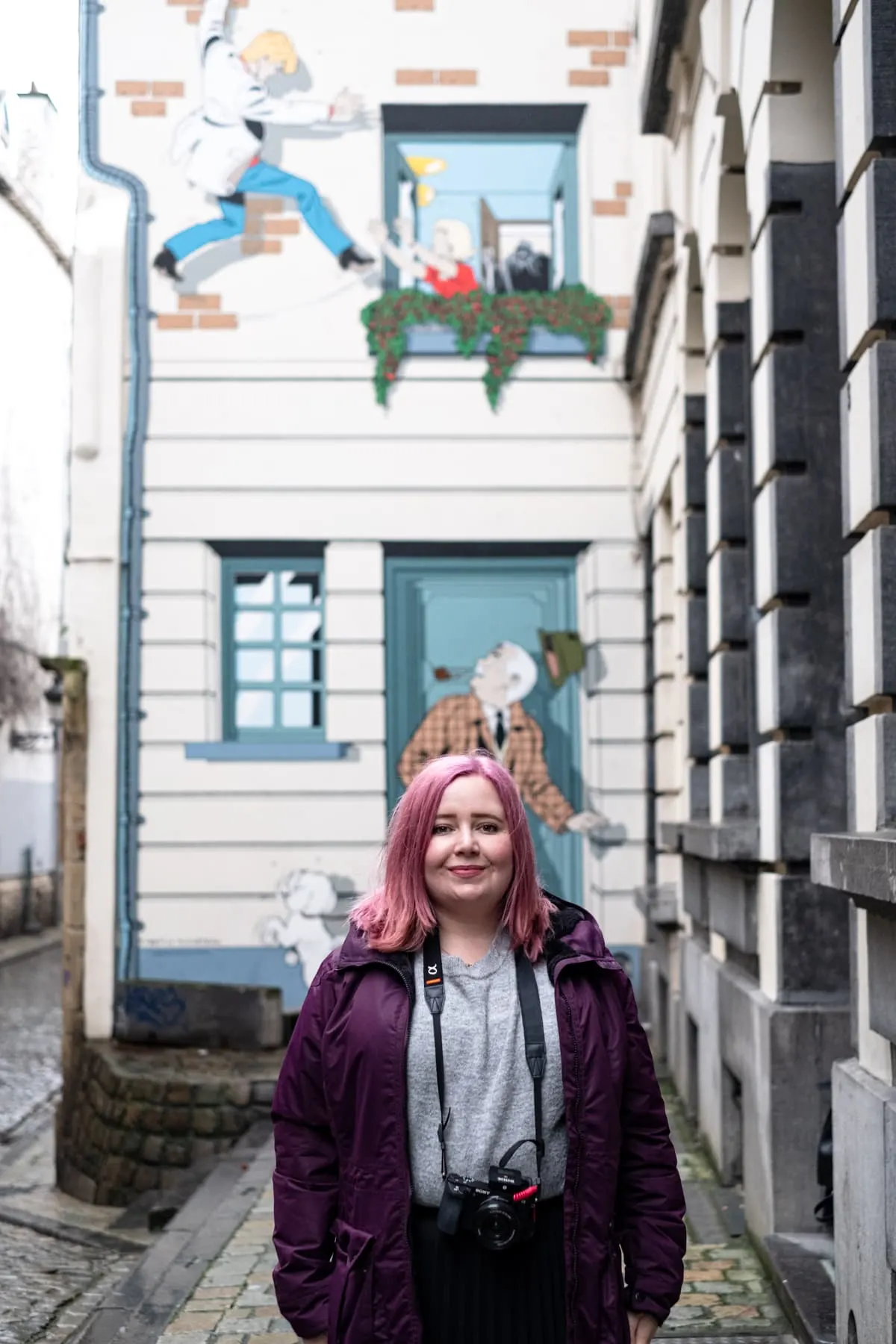
Like London, Brussels is also known for it many unique art murals around the city. Brussels was influential in the early days of the Art Nouveau movement; there are buildings scattered all over which can be visited, along with private buildings, via a tour offered by ARAU.
Bruges

- Market Square is the main square in Bruges, surrounded by some of the city’s most iconic buildings.
- The Belfry Tower was founded in 1240 as a wooden tower on a stone building, and is the most famous and tallest part of Market square.
- Bruges City Hall has Gothic architecture and was completed in 1421, being one of the oldest in the Low Countries.
- Church of Our Lady Bruges is an impressive Catholic cathedral with a museum that boasts paintings, reliquaries, tombs and mosaics, and a Michelangelo Madonna and Child.
- The Rozenhoedkaai, or Quay of the Rosary, is one of the most photographed and beautiful sights throughout the city of Bruges, with its canals and classic buildings.
- The 12th-century Roman Catholic Basilica of the Holy Blood is stunning inside and out.
- The Beguinage convent is a very special UNESCO site, where you can hear the nuns chanting at noon each day.
- There are also several medieval city gates and windmills for you to visit.
- And Bruges has its share of museums as well. Check out the Groeninge Museum of Art and the merchants house (Gruuthuis).
- Other popular attractions include the Lace Centre and the Chocolate Museum.
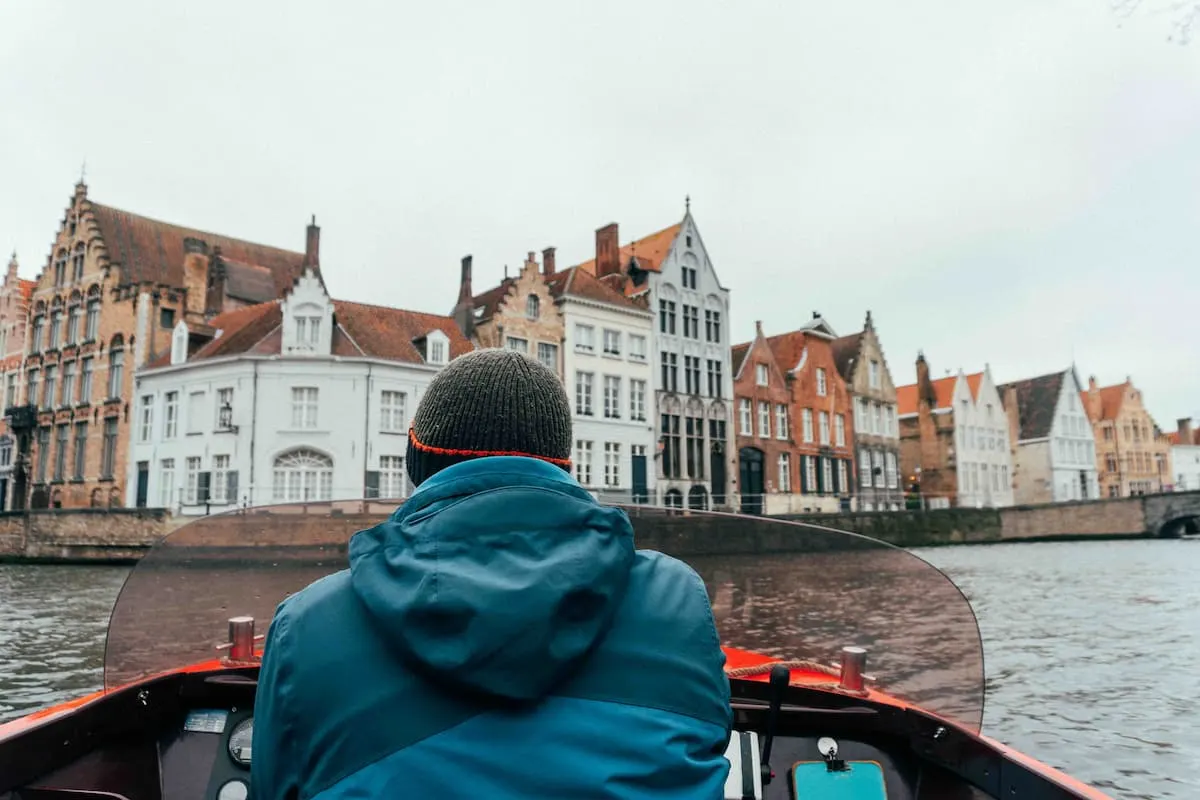
With Bruges being a much smaller city, the sights are that much closer to each other and hard to miss. Every street is picturesque, with beautiful buildings and charming character.
Being surrounded on three sides by canals, it’s easy to walk around the town, from the centre square to the Belfry Tower, across the bridges and canals along the Minnewater Lake, and back to the historic buildings of Bruges.
Transportation and Getting Around
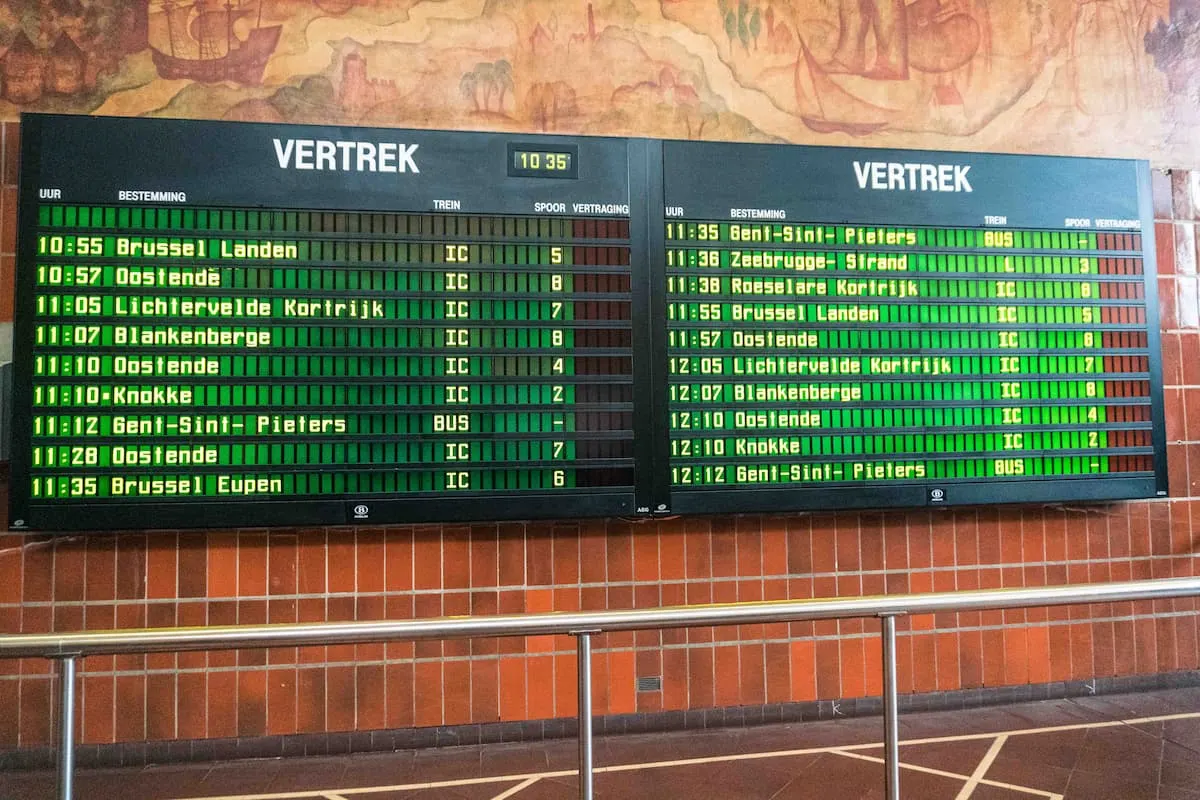
Brussels
Most of Brussels can be explored by foot, with the city centre having many of the attractions you’ll want to visit. Other landmarks like the Atomium or National Basilica will require public transportation. Still, you can buy a 24-hour public transport pass for 7.50 Euros or use the contactless system for single tickets.
Depending on what you’re going to be doing, it might make more sense to purchase The Brussels Card, which allows you to use public transportation as well as granting entry into the 39 museums in the city.
Or, you can catch a hop-on, hop-off tourist bus. This is a good way to see the city, and it’s located right across the street from the central train station.
Bruges
Bruges was made for walking. It’s not a very large city and a lot of the city centre doesn’t even allow cars, which makes it even more pedestrian-friendly. They do have a handy network of buses though, that can take you around the outskirts of the city, but really, it’s all totally walkable. It’s definitely doable to get by without using public transport at all, except when and if you’re arriving and leaving by train.
Two more unique and enchanting ways to see Bruges though, are by boat and horse-drawn carriage. They go hand-in-hand with the enchanting town. And last but not least, a bike ride is another sweet way to travel.
Food and Nightlife
Brussels

- Frites are by far the best street food in Brussels. Belgians loves their frites and you will too after you’ve tasted them!
- Of course, you can’t go to Belgium without finding Belgian waffle shops strewn throughout the capital. And there’s no better place to try them once, or twice.
- Beer is also big in Belgium and they have a rivalry with Germany for which country has the best beer. You might be surprised to learn that Belgium is home to the world’s largest brewer, AB InBev, and has 224 breweries in the country.
- Premium Belgian chocolates are very well-known throughout the world, and Brussels has over 500 different chocolatiers spread throughout the city. Do you realize what this means? That for every 2,000 people, there’s a chocolatier. Belgians know their chocolate. Even the popular Godiva chocolate was started in Brussels.
- And you must try mussels in Brussels! “moules-frites” is a Belgian and Brussels specialty.
If you’re looking for a good night out, Brussels definitely beats Bruges. It’s not as crazy as some other European countries, but can hold its own. The city centre has a plethora of bars, with many of them having deals such as 1 Euro pints. If you’re looking to dance the night away, check out You Night Club and Fuse, two of the biggest and most popular clubs in the city.
Bruges
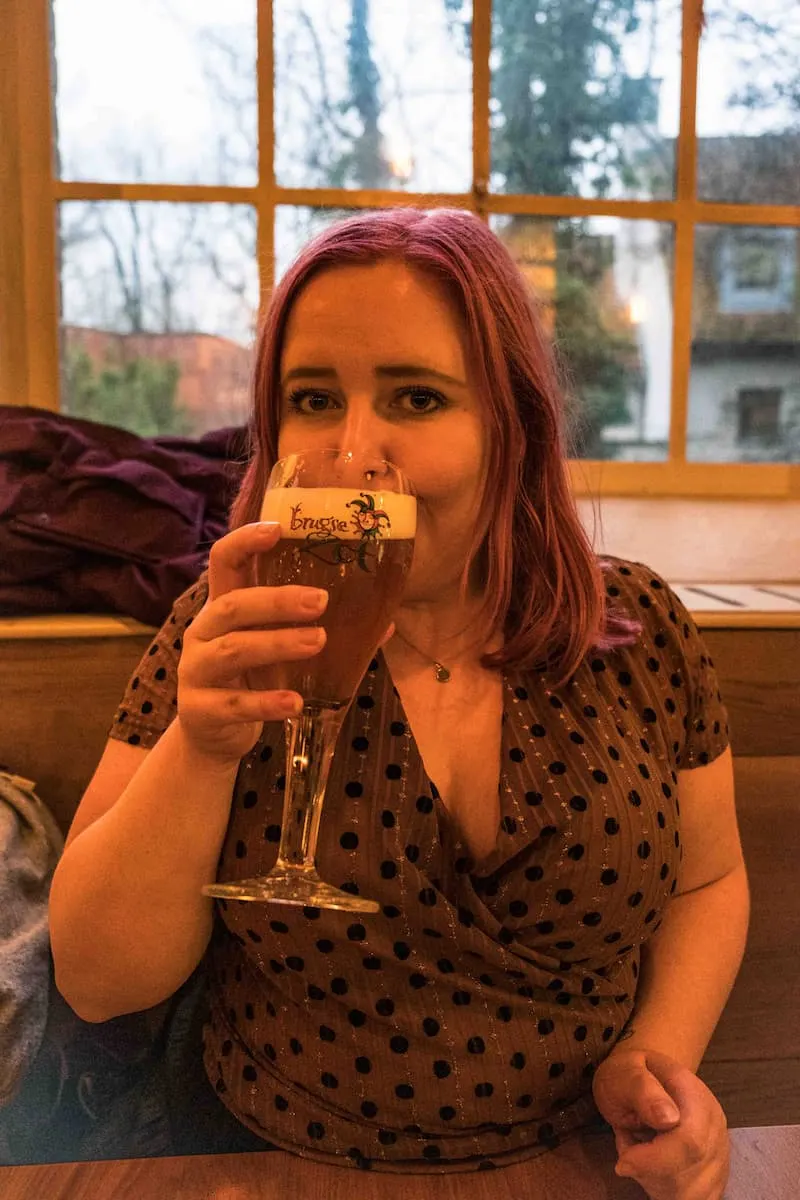
- Bruges offers some one-of-a-kind dishes, such as popular Belgium stews. Be adventurous and try the Elderberry Soup, Waterzooi, Curried Mussel and Butternut Squash Soup, and Presoep.
- You’ll also find the cobblestoned streets lined with chocolate shops, such as the reputable Chocolatier Dumon, said to make the best chocolate. You can even visit the Chocolate Museum.
- The town is also famous for the incredibly creamy and soft Passendale cheese, named after the village it originates from.
- Don’t leave without tasting some of the sweets while you’re in the area, especially the Brugsch swaentje, which stands for Bruges swans, an important symbol of Bruges.
You’ll want to make early reservations in Bruges, especially for lunch, due to the large number of tourists that come in for the day. The evening gets very quiet though after the daytrippers leave, so you won’t find the nightlife that Brussels offers. But that doesn’t mean they don’t have a nightlife!
Don’t forget you’re in Belgium, where they have some of the best beer in the world, so you’ll still find bars scattered throughout the city centre for bar hopping. Popular bars, Le Trappiste and Poatersgat, stay open until 1am or later on Sundays.
There’s even a nightclub called De Coulissen Brugge for something a little more wild, and if cocktails are more your thing, the Garden of De Republiek Café is a good choice.
Brussels or Bruges?
Do you want to visit a large, bustling capital city, or a quaint medieval town, complete with cobblestoned streets and picturesque canals. If it’s the former, Brussels. For the latter, it’s Bruges. As you can see, you’re winning either way!
If you’re not bothered either way, I’ll be honest and say Bruges is the more unique of the two. There are several fantastic metropolitan cities in Europe that can compete – and often surpass – what Brussels has to offer. Cute, exceptionally-preserved medieval cities with beautiful canals and delicious chocolate? Not quite so common.
Why Not Do Both?
And then there’s always the option to visit both cities. It’s not uncommon for travellers to do day-trips from one city to the other. Brussels and Bruges are only 60 miles apart, and about one hour by train, so their close proximity does make this a viable option. You’ll even find discounted round-trip fare on the weekends.
I hope this guide has helped you decide which Belgium city is right for you! Belgium is a beautiful and really special country to visit and will leaving you wanting more. You can always visit them both if you’re still undecided!

Kat
Hi, I'm Kat, an Australian that moved to London in 2013 to start a new adventure. What a roller-coaster that was! I love helping others move to the UK and people explore the world! I’d be honoured if you’d say, “Thanks!” with a £3 coffee on Ko-fi.

